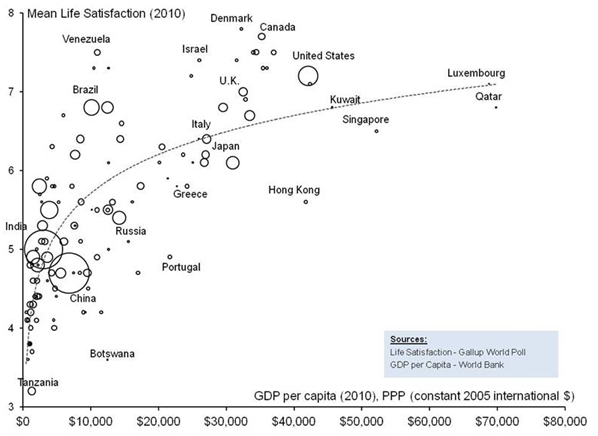At the end of November, the Office of National Statistic (ONS) released its latest update in its Measuring National Wellbeing programme. This is an ambitious project that seeks to develop a broader and more balanced measure of progress than GDP alone.
The data shows that, despite more than doubling our wealth, life satisfaction in the UK has barely moved (see graph below). This phenomenon is known as the Easterlin paradox.
Some clues as to what some of the underlying drivers of wellbeing might be are to be found in cross-national data. The graph below plots GDP per capita against life satisfaction across countries.

The data shows the traditional curvilinear relationship of rising life satisfaction with increased GDP per capita, but diminishing returns at higher income levels (including at those enjoyed in the UK). It also shows that some countries with similar levels of wealth have different levels of life satisfaction. People in Brazil and Venezuela, for example, enjoy much higher levels of life satisfaction than countries with similar levels of GDP per capita.
Studies show that factors associated with higher levels of wellbeing include levels of social trust, social relationships, and inequality. Academic research also demonstrates that wellbeing is predictive of other outcomes too – such as how long you will live or how productive you are at work.
Jeremy Heywood, the Cabinet Secretary, recently called for the Civil Service to be at the forefront of this new research agenda, so that policy makers in the UK focus not just on how to strengthen economic growth, but also how to increase the wellbeing of the population.